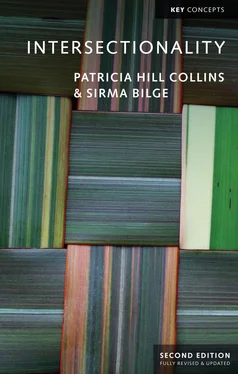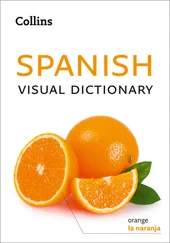In this book, we examine multiple aspects of intersectionality but, for now, we want to show three uses of intersectionality as an analytical tool. In line with Cho et al.’s argument that “what makes an analysis intersectional is not its use of the term ‘intersectionality,’ nor its being situated in a familiar genealogy, nor its drawing on lists of standard citations,” our focus is on “what intersectionality does rather than what intersectionality is” (2013: 795). Our cases of how intersecting power relations characterize international football, the growing recognition of global social inequality as an intersectional phenomenon, and the emergence of the black Brazilian women’s movement in response to specific challenges of racism, sexism, and poverty illustrate different uses of intersectionality as an analytic tool. Specifically, they suggest how intersectional analyses of sports illuminate the organization of institutional power, how intersectionality has been used to diagnose social problems, and how intersectional responses to social injustices enhance activism. These cases both introduce important core ideas of intersectional frameworks and demonstrate different uses of intersectionality as an analytic tool.
Power plays: the FIFA World Cup
Across the globe, there is no way of knowing exactly how many people play football. Yet surveys by the International Federation of Association Football (FIFA) provide a good guess: an estimated 270 million people are involved in football as professional soccer players, recreational players, registered players both over and under age 18, futsal and beach football players, referees, and officials. This is a vast pool of both professional and amateur athletes and a massive audience that encompasses all categories of race, class, gender, age, ethnicity, nation, and ability. When one adds the children and youth who play football but who are not involved in any kind of organized activity detectable by FIFA, the number swells considerably.
Intersectionality’s emphasis on social inequality seems far removed from the global popularity of this one sport. Yet using intersectionality as an analytic tool to examine the FIFA World Cup sheds light on how intersecting power relations of race, gender, class, nation, and sexuality organize this particular sport, as well as sports more broadly. Rich nations of the Global North and poor nations of the Global South offer different opportunity structures to their youth to attend school, find jobs, and play sports, opportunity structures that privilege European and North American nations, and that disadvantage countries in the Caribbean, continental Africa, the Middle East, and selected Latin American and Asian nations. These national differences align with racial differences, with black and brown youth from poor countries, or within neighborhoods within rich ones, lacking access to training and opportunities to play. Girls and boys may want to play football, but rarely get to be on the same teams or compete against one another. As a sport that highlights physical ability, football brings a lens to the phrase “able-bodied” that underpins analysis of ability. At its foundation, football is big business, providing financial benefit to its backers as well as to a small percentage of elite athletes. Differences of wealth, national citizenship, race, gender, and ability shape patterns of opportunity and disadvantage within the sport. Moreover, these categories are not mutually exclusive. Rather, the patterns of their intersection determine which individuals get to play football, the level of support they receive, and the kinds of experiences they have if and when they play. Using intersectionality as an analytic tool illuminates how these and other categories of power relations interconnect.
Because it is a global phenomenon, the FIFA World Cup is a particularly suitable case to unpack in order to show how intersecting power relations underpin social inequalities of race, gender, class, age, ability, sexuality, and nation. Power relations rely on durable, albeit changing, organizational practices that, in this case, shape the contours of FIFA World Cup soccer regardless of when and where the games occur and who actually competes. Four distinctive yet interconnected domains of power describe these organizational practices – namely, the structural, cultural, disciplinary , and interpersonal . These domains of power are durable across time and place. FIFA’s organizational practices have changed since its inception and have taken different forms in Europe, North America, continental Africa, Latin America, Asia, the Middle East, and the Caribbean. Yet FIFA is also characterized by tremendous change brought on by new people, changing standards, and a growing global audience. Using intersectionality to analyze the FIFA World Cup sheds light on specific intersections of power relations within the organization; for example, how gender and national identity intersect within FIFA writ large, as well as the specific forms that intersecting power relations take within distinctive domains of power. Here we briefly discuss intersecting relations within each domain of power within FIFA, thereby laying a foundation for analyzing intersecting power relations.
The structural domain of power refers to the fundamental structures of social institutions such as job markets, housing, education, and health. Intersections of class (capitalism) and nation (government policy) are key to the organization of sports. In this case, ever since its inception in 1930, the World Cup tournament has grown in scope and popularity to become a highly profitable global business. Headquartered in Switzerland, FIFA enjoys legal protection as an international nongovernmental organization (NGO) that allows it to manage its finances with minimal government oversight. Managed by an executive committee of businessmen, FIFA wields considerable influence with global corporations and national governments who host the World Cup. For example, for the 2014 games in Brazil, FIFA succeeded in having the Brazilian parliament adopt a General World Cup Law that imposed bank holidays on host cities on the days of the Brazilian team’s matches, cut the number of places in the stadiums, and increased prices for ordinary spectators. The law also allowed beer to be taken into the stadiums, a change that benefited Anheuser-Busch, one of FIFA’s main sponsors. In addition, the bill exempted companies working for FIFA from Brazilian taxation, banned the sale of any goods in official competition spaces, immediate surroundings, and principal access routes, and penalized bars that tried to schedule showings of the matches or promote certain brands. Finally, the bill defined any attack on the image of FIFA or its sponsors as a federal crime.
Hosted by different nations that compete for the privilege years in advance, FIFA events typically showcase the distinctive national concerns of its host countries. Brazil’s experiences illustrate how national concerns shape global football. Fielding one of the most successful national teams in the history of the World Cup, Brazil has been one of a handful of countries whose teams have played in virtually every World Cup tournament. In 2014, the potential payoff for Brazil was substantial. Hosting the World Cup signaled its arrival as a major economic player on the global stage, minimizing its troubled history with a military dictatorship (1964–85). A victorious Brazilian football team promised to enhance Brazil’s international stature and foster economic policies that would help its domestic population. Yet the challenges associated with hosting the matches began well before the athletes arrived on the playing fields. Brazil estimated having to spend billions of US dollars in preparation for the event. The initial plan presented to the public emphasized that the majority of the spending on infrastructure would highlight general transportation, security, and communications. Less than 25 percent of total spending would go toward the 12 new or refurbished stadiums. Yet, as the games grew nearer, cost overruns increased stadium expenses by at least 75 percent, with public resources reallocated from general infrastructure projects.
Читать дальше












